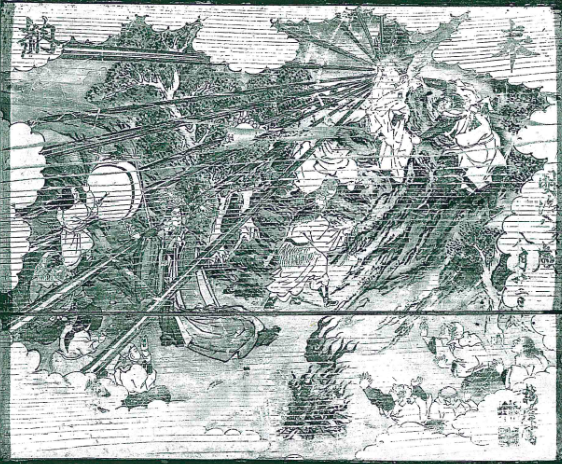When I lived in Japan I noticed that before Western modernization (pre Commodore Perry-1854) the windows had no glass. Because of this their window openings were small. The covering or panes were made of either shoji (handmade paper) or mica. Neither element did much to retain heat and keep the cold out during the long winter months. Nor did they have fireplaces to warm the rooms. Portable braziers were used. These small, mountainous islands making up Japan have been heavily populated for centuries and natural resources are scarce.
Because electricity is relatively recent to the world, the only after dark illumination came from candles. We can see why for very practical reasons the Japanese elevated gold (one of their few precious natural resources) and silver leaf to a fine craft. The gold or silver leaf could multiply the effect of fire from just one candle.
light absorbs
Unlike shadow which absorbs light, reflection throws the light back and this magnifies the amount for us to see. Light can only be comprehended by the eye in relation to what is around it. Matter absorbs light’s rays and reflect these rays back to us in the form light and color. Each surface has it’s own frequency of absorption and reflection of light. Light is broken down further into color…
The light which a color doesn’t absorb is the color that the object gives back or throws off. For instance, pink is pink because it is reflecting this color of the spectrum (think rainbow) off the object while the object is absorbing all the other colors.
Interestingly, there is no absolute color to an object. With each light sources an object looks a different color. And in darkness it appears black.
Another way to look at it is when one person sees pink, a color 'blind' person has a different perspective of that same color. Which is right?
light reflects
Since it is not absolute, can there be any right or wrong perception? Isn't it all in the eyes of the beholder?
Philadelphia Museum of Art Exhibit, Silver & Gold Fashion Since 1960

